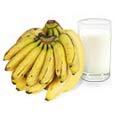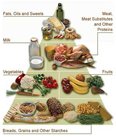|
Want to Know All About The DASH Diet?Dietory Approaches to HypertensionDASH Clinical Reports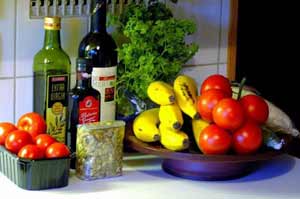
The DASH Diet is a diet based on the eating habits which are prevalent in Mediterranean countries, where it was observed that very few people suffered from high blood pressure and cardiac disease, compared to people in other areas. This observation stimulated researchers to undertake a study to find out if following a healthy diet, based on the one prevelent in many rural areas of the Mediterranean, could both reduce high blood pressure and prevent it from developing in the first place. Table of Contents This Page Page 2 Page 3 Page 4 Page 5 Page 6 Page 7
What does DASH Stand for?DASH is the acronym from “Dietary Approaches to Stop Hypertension," a clinical study that tested the effects of nutrients in food on blood pressure. The study showed that high blood pressure was reduced by a diet rich in fruits and vegetables, and low in fats, especially saturated fat, and cholesterol. In addition to fruit and vegetables, the DASH eating plan suggests choosing only low fat dairy foods, and including whole grains, nuts, fish and poultry in your diet, while reducing fats, red meats, and sugar, especially in sweet carbonated drinks. It is recommended by doctors worldwide for people who have pre-hypertension or hypertension (high blood pressure). 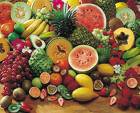
The DASH eating plan has been proven to lower blood pressure in as little as 14 days. Best response came in people whose blood pressure was only moderately high, including those with prehypertension. For people with more severe hypertension, who may not be able to eliminate medication, the DASH diet can help improve response to medication, and help lower blood pressure. The DASH diet can help lower cholesterol, and with weight loss and exercise can reduce insulin resistance. High blood pressure often has no symptoms or warning signs. If it stays elevated above 120/80 mmHg over time and is uncontrolled, it can lead to heart and kidney disease as well as stroke. The DASH Report I and its successor the DASH Report II shows that people who follow a DASH eating pattern have reduced risk of stroke and heart disease. The Dash-Sodium Study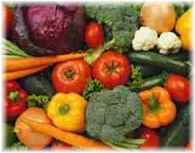
A second clinical study, called "DASH-Sodium," looked at the effect of a reduced dietary sodium intake on blood pressure as people followed either the DASH eating plan or a typical American diet. Results showed that reducing dietary sodium lowered blood pressure for both the DASH eating plan and the typical American diet. The biggest blood pressure-lowering benefits were for those eating the DASH eating plan at the lowest sodium level (1,500 milligrams per day). The DASH-Sodium study shows the importance of lowering sodium intake whatever your diet. But for a true winning combination, follow the DASH eating plan and lower your intake of salt and sodium. Similar to theDietary Guidelines for American 2005 (http://www.health.gov/DietaryGuidelines), the DASH diet puts more emphasis on whole grains, fruits and vegetables as well as low-fat dairy and meat products. Studies showed that the DASH diet has been shown to lower both systolic and diastolic blood pressure and that it can lower hypertension very quickly.
Where Does The Salt Come From?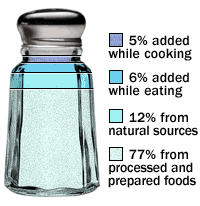
In general most people are consuming too much salt. But where does this salt come from. The graphic on the right shows that much of this salt (77%) is coming from processed or already prepared foods, 12% from natural sources, 5% is added when cooking and a further 6% is added at the time of eating. In order to reach recommended levels, the first thing to do should be to cut out all processed foods, or to read all labels to make sure any processed food is low-sodium. Adding food to your meals when eating is another area which is under your control, even when you are invited out. Never use salt withoug first tasting your meal, and gradually add less and less so your palate becomes used tothe natural taste of the food you eat. In the US, the current sodium recommendation made by the Federal Government's National High Blood Pressure Education Program NHBPEP is 2400 mg (~1 tsp of salt). The DASH-sodium study showed an even better blood pressure results with an intakeof 1500 mg daily. 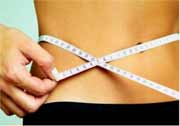
A Combined Approach is BestThe DASH diet, combined with a decrease in salt will help you to cut down on water retention and, combined with an exercise programme, can help you lose weight and prevent many age-related illnesses, in addition to lowering your blood pressure. In general, a diet that emphasizes fruits & vegetables, whole grains and low-fat dairy appears effective in shaving points off a blood pressure reading. Losing weight, cutting down on sodium, boosting potassium intake and limiting alcohol are all proven ways to help control blood pressure. People with high blood pressure should also avoid taking herbal supplements, including ephedra, ginseng, liquorice and feverfew, On the other hand, garlic and flax seed and lemon juice have shown some effects in lowering high blood pressure. Potassium, as well as calcium, plays an important role in regulating high blood pressure. Bananas, beans, tofu and potatoes are all rich sources of potassium. Try baking, roasting or steaming when cooking vegetables. Avoid boiling as potassium leaches out into the water during cooking. The average adult needs at least 1000mg of calcium daily. 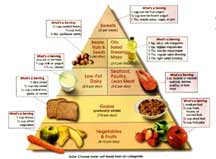
The DASH diet is also recommended by many organizations worldwide, including The National Institute of Health and the American Heart Oranization. To visit these websites go to the Eat Well Resources Page by clicking on the link below. For the DASH Pyramid click on the Pyramid ICON on the right. (Sources: The US Department of health and Public Services, National Heart Lung and Blood Institute, National Institute of Health)
For Further Resources on the DASH Diet and Sources Used for this Research, go to the
Eat Well Resources page.
|
Subscribe to Age-well.org Ezine
Eat Well
Table of Contents
Eat-Well-Homepage
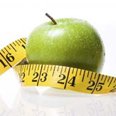
- Water
- Antioxidants
- Chocolate
- Caffeine
- Cherries
- Cranberries
- Maquiberries
- Salt
- Sugar
- Cholesterol and its Effect on Health
- Fruit & Vegetables - Fresh Versus Frozen or Canned
- Nuts, Beans and Pulses
- Monosodium Glutamate (MSG)
- Unsaturated Fats - The Right Fats for Health
- What are Transfats?
- Water
- 20 Benefits of Drinking Enough Water



All About Vitamins and Minerals

